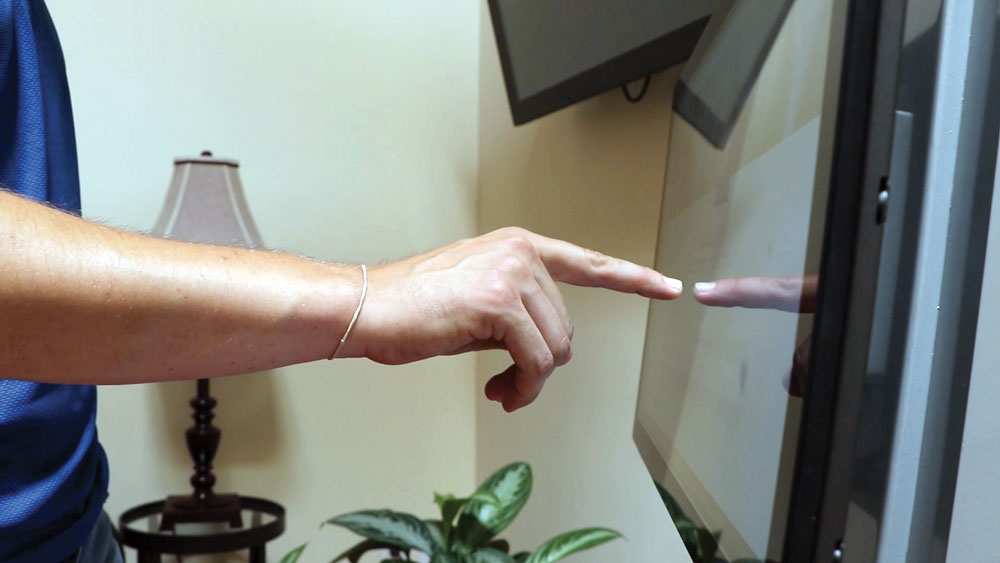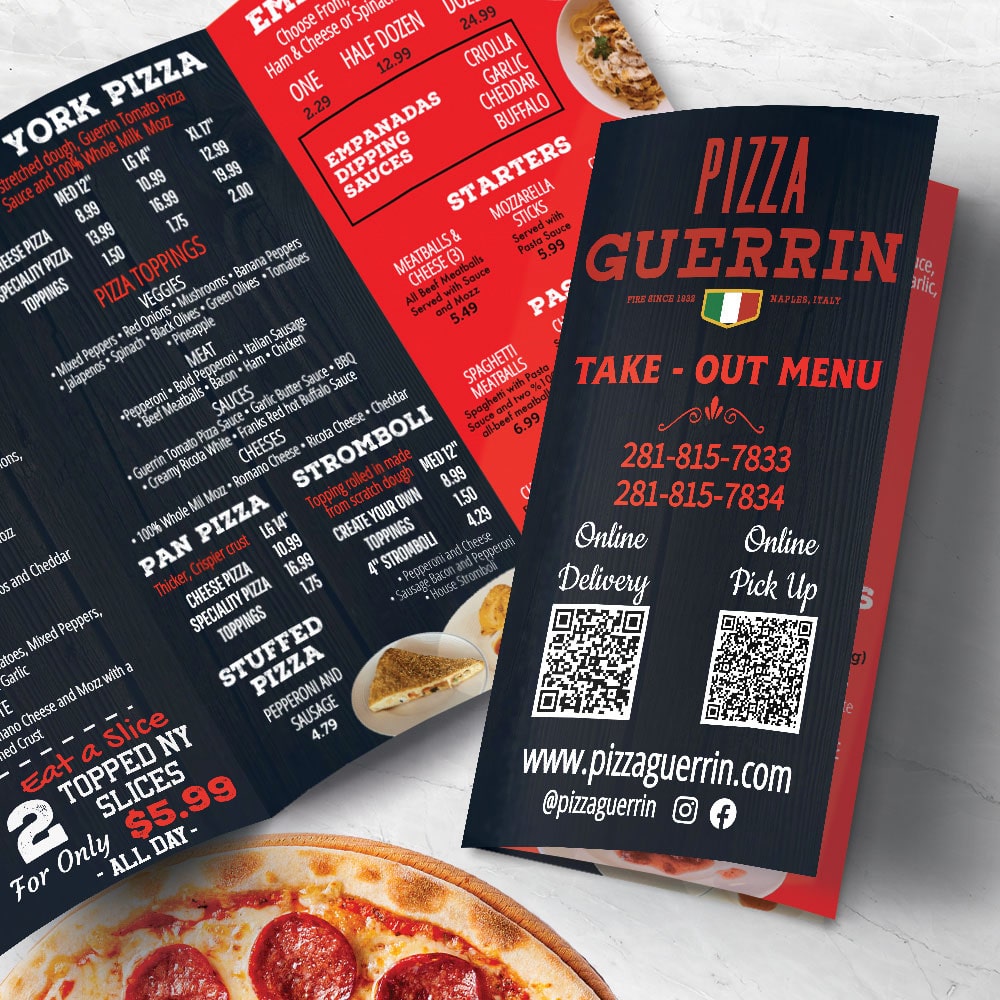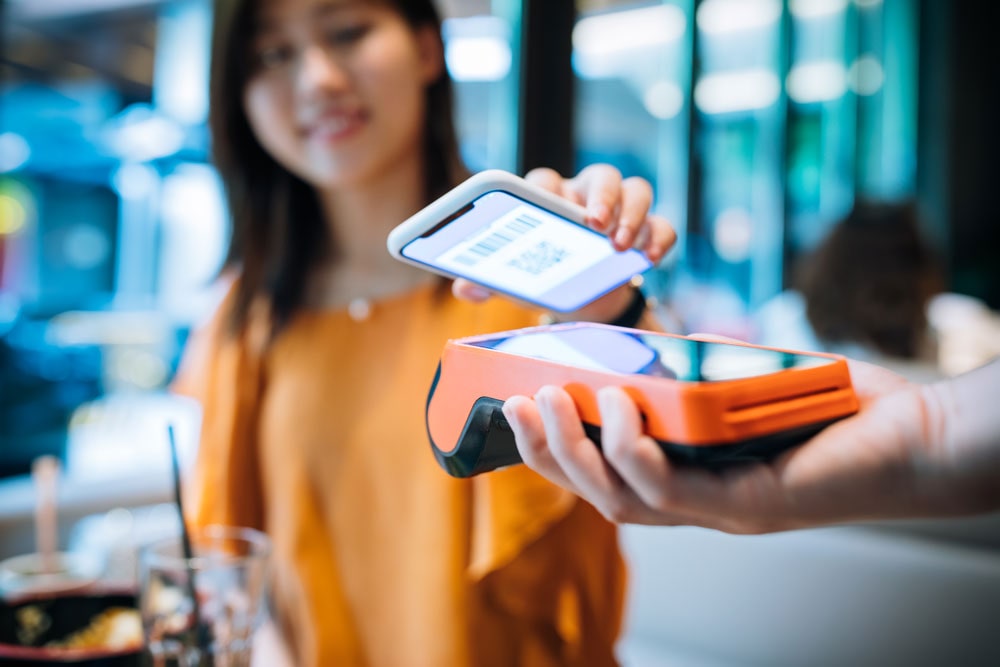This article appears in the January-February 2021 issue of PMQ Pizza Magazine. Click here to read it in our digital edition.
By Tracy Morin
COVID-19 may have ushered in a “new normal” for all of us, but it also reinforced and accelerated certain movements that were already well under way, including tools that allow for less human contact—or none at all. In our technology-driven times, today’s consumers are accustomed to calling out their whims to virtual assistants (“Alexa, order a pizza!”), scanning QR codes for content, and interacting with online chatbots.
TOUCH-FREE TIP! Print QR codes on signage at designated curbside pickup areas. Customers can scan to notify the restaurant that they’ve arrived, so a runner can bring out the order when it’s ready.
However, COVID-19 has made these tools more than convenient; they now feel like necessities. “During COVID, offering contactless solutions can literally save lives,” says Saleem S. Khatri, CEO of MenuDrive, with global offices including Miami and Albuquerque, New Mexico. “Pizzerias that give customers a way to place an order directly from their devices have an immediate advantage over others with more analog ordering methods. That’s true now, during the pandemic, and it will be true long afterward as well.”
Related: 6 creative uses for QR codes at your pizzeria

Kiosks that don’t require physically touching a screen are positioned as a safer option in pandemic times. Photo courtesy Karen Tokarski, Airtouch
Speaking Out
Boulder, Colorado-based RedShift Voice Technology has developed a natural language understanding platform to allow restaurant customers to place online orders hands-free, using only their voices, through iOS, Amazon Echo and Google Home. The tech utilizes “speech recognition vocabulary and language models [that] are customized to each brand’s specific menu items by understanding typical ordering language and unique items.” Ultimately, the system converts audio to text and repeats the order back to the customer in real time.
The QR Comeback
As “old-school” paper menus have been phased out during the pandemic, more operators are tapping QR codes that customers can scan to pull up menus on their mobile devices. Though QR codes are not new, they are now easier to use. Jim Williams, president of MustHaveMenus in Ashland, Oregon, notes that smartphones of years past required downloading an app to read them, but today’s phone cameras are equipped with QR code readers built in. “The pandemic made QR codes take off,” Williams says. “I think they were the trend of the year in 2020.”
Even better, QR codes have a plethora of applications in the pizzeria. Mo Chaar, chief commercial officer of Toronto-based Givex, suggests the following uses:
Menus: Place QR codes that lead to your menu (and current offers, if applicable) at the cash register and at the door for easy access, allowing customers to peruse before entering. For dine-in, print QR codes on table tents or on signage at the host station. This prevents sharing menus and unnecessary interaction with staff.
TOUCH-FREE TIP! Want to get feedback on your service? Offer a QR code that takes customers to a survey (and incentivize them with a special offer for completing it).
Curbside: Print QR codes on signage at designated curbside pickup areas. Customers can scan to notify the restaurant that they’ve arrived, so a runner can bring out the order when it’s ready.
Takeout: Provide QR codes in the store window or on sandwich boards. Customers can scan to place their order via an app or website, so they don’t have to order face-to-face with a cashier. Print QR codes on delivery boxes and takeout packaging, inviting customers to enroll in your loyalty program.
Customer experience: Want to get feedback on your service? Offer a QR code that takes customers to a survey (and incentivize them with a special offer for completing it).

QR codes on to-go menus can take customers to the pizzeria’s current special offers, online ordering, or loyalty program signup page. Photo courtesy MustHaveMenus
“Think about using QR codes for any situation where you have a call to action that is digital—i.e., download our app, order online, enroll in our loyalty program—but the customer is in a physical space,” Chaar recommends. “Previously, a customer would have to type a long URL into a web browser on their phone, but by using QR codes, that action becomes as easy as taking a picture with their phone.”
In addition, Khatri stresses that pizzerias can benefit from using QR codes for marketing purposes. “Feature your online menu’s QR code as prominently as possible, in as many places as possible: Facebook cover images, Instagram posts, flyers, to-go order materials, on dine-in checks, and on local bulletin boards,” he advises. “And share your online menu QR code to all of your customers through social media, email marketing and any other channel your pizzeria uses.”
Related: Increase your pizzeria’s sales by improving your carryout and curbside game
Finally, Williams notes that QR codes can lead customers to a landing page that connects with everything you offer—online ordering, videos and social media pages, for example. “Once the code is out there, you want it to be flexible, so you can add videos or change ordering options,” Williams adds. “Just make sure that the info they see via the code, including your menu, is optimized for mobile—convenient and easy to read and swipe through on a smaller screen.”
TOUCH-FREE TIP! Print QR codes on delivery boxes and takeout packaging, inviting customers to enroll in your loyalty program.
Contactless Kiosks
Like everything else under the sun, kiosks have been forced to adapt and transform to meet our modern reality, shaped by COVID-19 concerns. Fortunately, Gene Halsey, general manager of TES America’s Holland, Michigan-based operations, notes that as pizzerias require safer and more hygienic ways to engage guests, manufacturers of tech-driven machines like kiosks are answering the call. “A major effort is under way to create customer experiences that mitigate the spread of disease, including contactless monitors, antimicrobial screens, and even remote-control displays that allow users to interact and consume information using their own phone or device,” Halsey says.
In this era of heightened concern about spreading viruses and bacteria, a contactless projected capacitive touch (PCAP) display interface has been engineered to eliminate the need for touching a physical screen. Instead, the user places his finger near the screen, activating it through the finger’s proximity (up to 33mm) to the screen’s surface, and contactless sensors detect and respond to the finger’s movements. “Because the user is interacting with the device in the same way he would with traditional touch [without physically touching it], there’s no learning curve, and it can be retrofitted into existing installations easily,” Halsey says. “And we’re looking at safe user interactions through lifelong durability. Unlike applied antimicrobial coatings that lose their effectiveness over time, the monitor can retain its effectiveness, without limitations on [the germs] it protects from.”
Alternatively, kiosks can now assist operations by responding to voice commands, ensuring a touch-free experience. For example, the customer can approach the kiosk and start off with a “wake word” to activate the experience (such as “Hello, Domino’s”). Afterward, customers can speak normally, thanks to automatic speech recognition and natural language understanding via the machine, which can then ask pertinent questions as needed.

Aside from removing person-to-person contact from the equation, there are even greater potential perks. “The exciting part is that the machine can glean certain demographic information from the person’s voice, such as age, gender and mood, then personalize the experience to that type of customer,” says Anu Adeboje, marketing specialist for Sensory in Santa Clara, California. “Over time, it can collect data—this kind of person tends to order X—so that it can upsell certain items based on that info. And the customer benefits from a seamless experience, simply approaching and using their voice, rather than touching a screen.”
Meanwhile, Box’d by Paramount, a Middle Eastern fusion eatery in Toronto, has developed its own fully automated contactless experience based on “digital cubby” technology. First, customers place orders from their phones, computers or an in-store kiosk. “The order transmits to chefs and, in less than 10 minutes, the customer’s name shows up on an electronic screen above a wall of glass cubbies,” Chaar explains. “The guest taps a button to open his cubby, and there is a freshly prepared, sealed meal, ready to grab and go—helping ensure minimal waiting, minimal contact, fresh food and ordering convenience in a world of social distancing.”
Of course, digital cubbies and voice-activated kiosks haven’t gone mainstream just yet. But, at minimum, make sure your pizzeria’s online ordering enables seamless contactless delivery, which includes sending out updates to notify customers of the order’s progress—i.e., estimated delivery time at the outset, and upon delivery at the end. “Contactless payments are more important to utilize than ever before,” Khatri says. “Customers should be able to easily place contactless orders through your online ordering platform and pay for them through the same system.”
Tracy Morin is PMQ’s senior copy editor.















